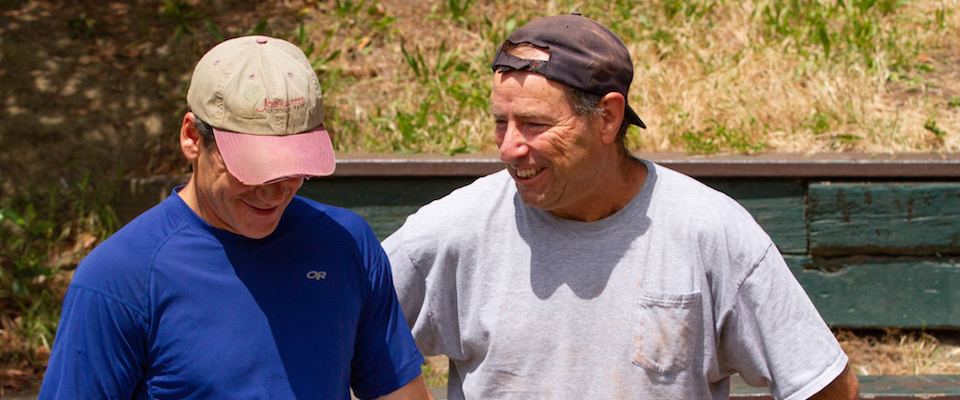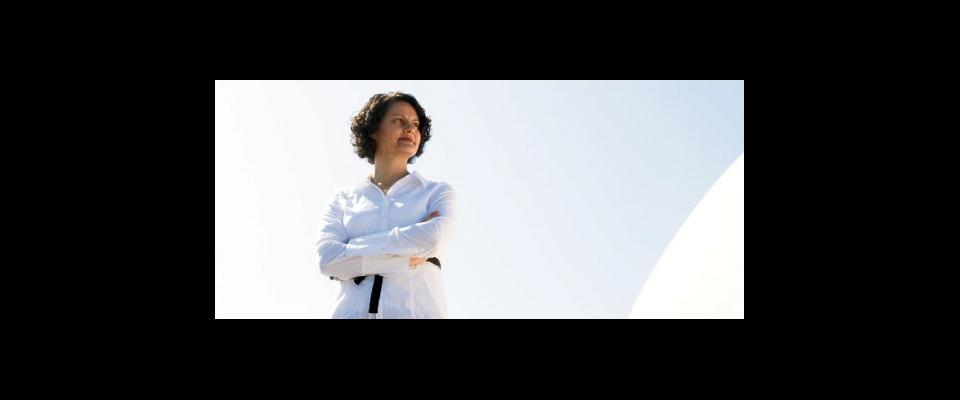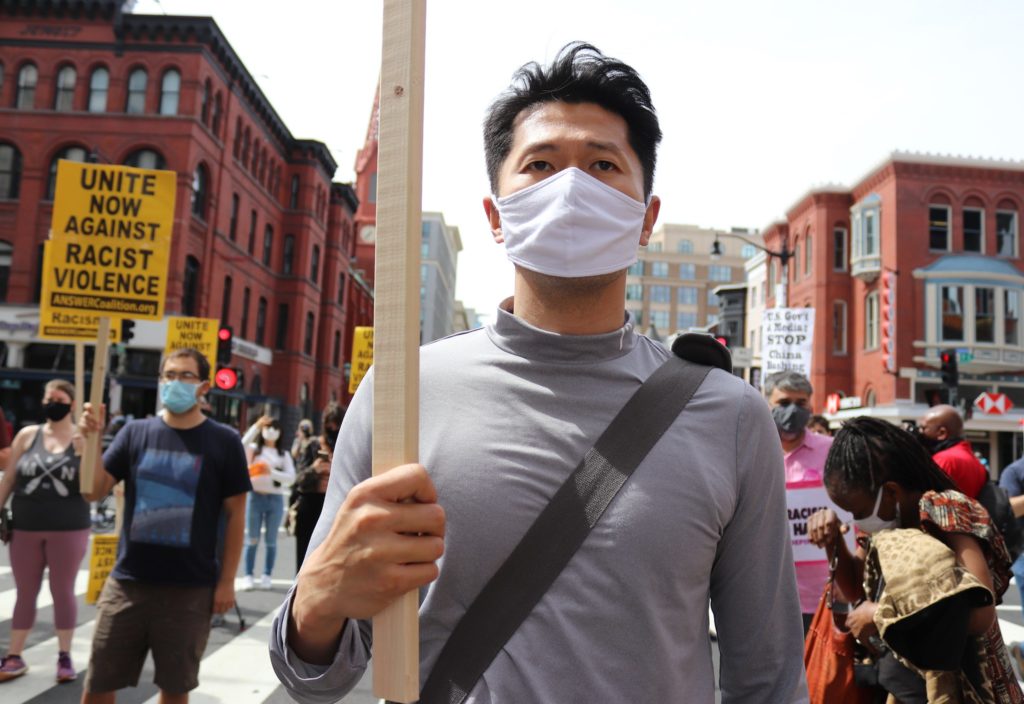“Speak only truth,” says little Ray, as he raises his arms above his head, clasps his hands, then in a prayer-like gesture, places them over his heart. Ji Hun, giggling in delight, knocks over a stack of toys. I proceed with our lesson and say nothing—Ji Hun earned my loyalty the day I showed up with only a maraca, having forgotten my boom box: He was the only one who kept flawless time.
I am not sure where Ray learned to say, “speak only truth” during this movement, but he always does. He is charming in his glasses, 4 years old, precocious, kind and gracious. On the day I was teaching them to stand on one leg I let the children hold on to something: the wall, a chair, one another, me. After all, they were preschoolers. Jessica was holding onto the edge of the chalkboard, weaving madly and narrating her experience with a wild “ahh, ohhh, eeee!” Ray, who had this pose down, shouted encouragingly at her, “You can do it!”
When I teach the baby class we don’t do much balancing. I raise an arm, they raise a leg. They fall down, they poop in their diapers. A big part of my role is to be a non-Korean person they can see up close and not fear.
When I first started teaching, some of the children were fascinated by my swarthy difference from them: the sweatiness of my armpits, my tanned olive skin. But they seemed to accept me after a visit or two.
I take special pleasure in my relationship with 2-year-old Nicole, who wept upon first seeing me but now greets me with joy when I enter the room. She is also my star dance pupil and ham, jumping into the middle of class with funky moves.
The L.A. Unified School District was in budget crisis, as was I, as were half of my friends when I was cajoled into taking this job. I had met an old friend who upon learning that I was a dancer talked me into coming to work with her. Kids had no art classes and my friend, motivated by her fierce love of her daughter, organized the arts program of both their dreams, at elementary schools in Highland Park.
She convinced the leader of the nonprofit where she worked (who was in love with her) to pay me so she could have a TA, and we taught dance to a class of 40-plus kids. The students brought their tiny siblings, their grandparents. She and I, both trained in the deeply West African tradition of the Bay Area dance community, held this circus together with donated instruments, discipline, and faith.
So when she told me to go to Koreatown, I went. I gave an excuse to my boss at the Pilates studio where I worked, grabbed a boom box and some salsa tracks, and headed to the preschool in my beat-up Honda. I met the operators of the school, informed them that I had no qualifications, a full-time job as a Pilates instructor, and absolutely no time for them. They looked at me quizzically and led me to a room of toddlers. Stumped, I improvised a lesson in Spanish prepositions set to the salsa beat of my boom box. The children loved it. If there is a person who can turn down the opportunity to teach children to dance, it is not me.
And so I am here—having moved my clients around and been yelled at by my boss—dancing with preschoolers in the basement of a church. It is 2009, and the economy is in tatters. My beloved grandmother is dying. These children are the light of my life.
Soon I will end my stint here and pass the gig on to a friend of mine, who is actually trained to work with kids. But not before I have learned some Korean prepositions, and the toddlers can salsa dance in adorable formation. I return to teaching Pilates to adults, move back to Oakland, get on with my life. And every time I want to lie to make my life easier, I hear the sweet voice of little Ray.





















